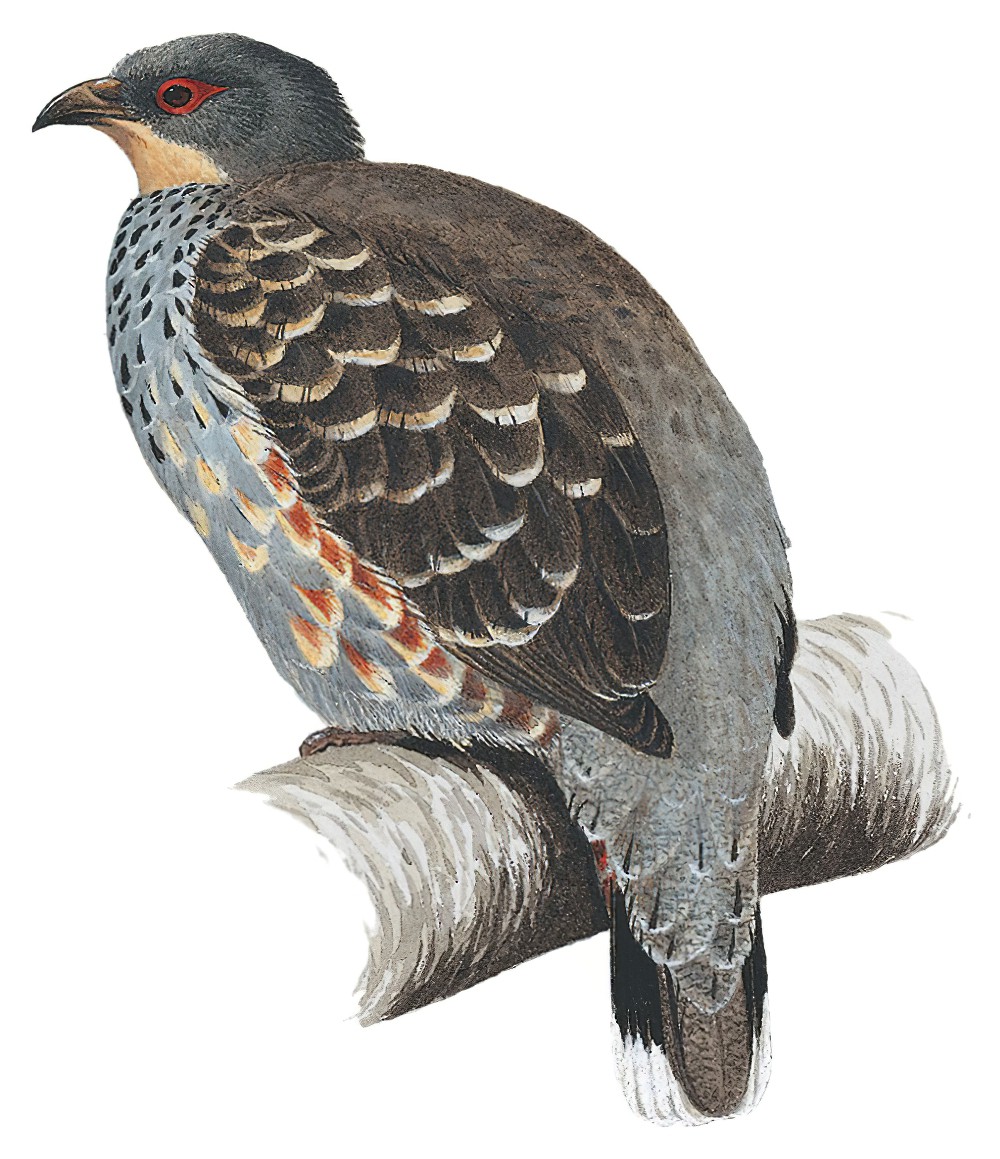Szechenyi’s Partridge / Tetraophasis szechenyii

Szechenyi's Partridge
SCI Name:
Protonym: Tetraophasis Széchenyii Zeitsch.ges.Orn. 2 p.50 pl.2
Taxonomy: Galliformes / Phasianidae / Tetraophasis
Taxonomy Code: szepar1
Type Locality: 'Szii-csuan '' = Szechuan or eastern Tibet.
Author: von Madarász
Publish Year: 1885
IUCN Status: Least Concern
DEFINITIONS
TETRAOPHASIS
(Phasianidae; Ϯ Chestnut-throated Partridge T. obscurus) Genus Tetraogallus J. Gray, 1832, snowcock; Mod. L. phasis pheasant < Med. L. phasis avis pheasant; "TETRAOPHASIS OBSCURUS. MOU-PIN PHEASANT. LOPHOPHORUS OBSCURUS, J. Verr. Archiv. du Mus. Paris (1870), p. 35. HAB. Thibet (DAVID). THIS curious bird is one of the late discoveries of the French missionary Père David, and was described by M. Jules Verreaux, in the Archives of the Museum of Paris, as Lophophorus obscurus. It cannot be considered to belong to that genus, although in some characters it resembles its members, but represents an entirely new genus, and apparently connects a portion of the Phasianidæ with the Snow-Partridges or Tetraogalli. Nothing is known about its economy or habits." (Elliot 1871); "Tetraophasis Elliot, Monogr. Phasian., 1, 1871, p. xix, pl. [21] and text. Type, by original designation and monotypy, Lophophorus obscurus J. Verreaux." (Peters 1934, II, 62). This small group, formerly known as Monal Partridges, is confined to the mountains of central and southwestern China.
szechenyii
Béla Graf Széchenyi von Sárvár-Felsővidék (1837-1908) Hungarian traveller, explorer, collector in North America 1863, and Central Asia 1877-1880 (Tetraophasis).
UPPERCASE: current genus
Uppercase first letter: generic synonym
● and ● See: generic homonyms
lowercase: species and subspecies
●: early names, variants, mispellings
‡: extinct
†: type species
Gr.: ancient Greek
L.: Latin
<: derived from
syn: synonym of
/: separates historical and modern geographic names
ex: based on
TL: type locality
OD: original diagnosis (genus) or original description (species)












